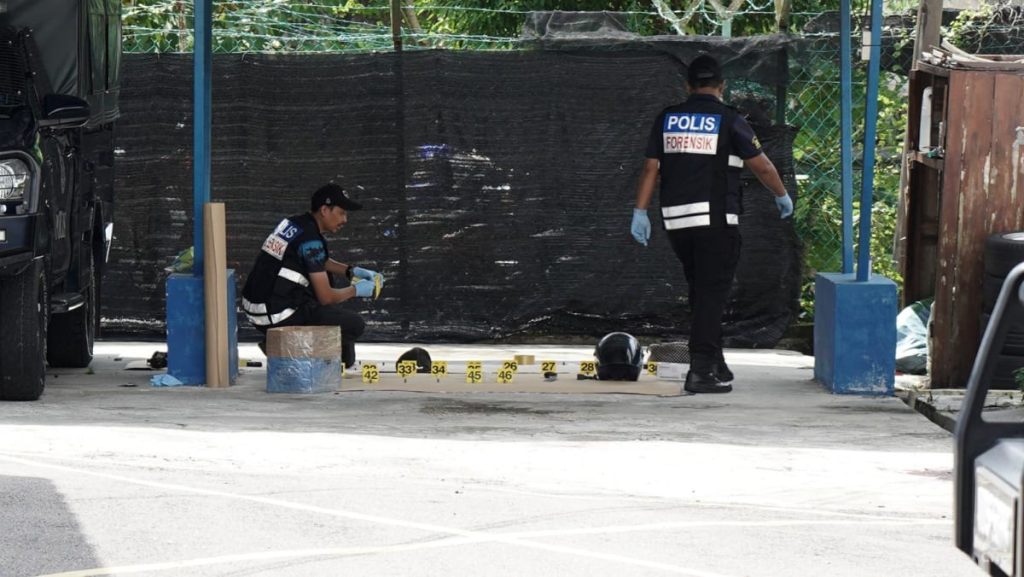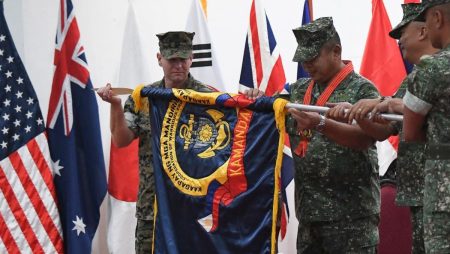More than 20 individuals believed to be linked to Jemaah Islamiyah (JI) have been arrested for questioning, including five members of a suspect’s family ranging in age from 19 to 62. The suspect’s father, aged 62, is a known member of JI, highlighting the potential connections within the group. Additionally, two individuals who were filing a police report at the time have also been apprehended, with authorities suspecting their involvement in the attack as potential distractions for law enforcement. As a result of these arrests, security measures have been heightened at various locations such as police stations, the state’s palace, and the official residence of the Johor chief minister.
Following an incident where two police officers were killed and another injured, along with the suspect being fatally shot, the bodies have been taken to Hospital Sultan Ismail for autopsy and further investigations. The injured officer has also been transported to the same hospital for medical treatment. These developments have raised concerns regarding potential terrorist activities in the region, especially considering the perpetrator’s alleged connections to JI, a group known for its involvement in deadly terror attacks. JI is famously linked to Al Qaeda and responsible for numerous attacks, including the 2002 Bali bombings that resulted in over 200 casualties.
Reportedly, JI’s spiritual leader Abu Bakar Bashir established a religious school, Luqmanul Hakiem, in Ulu Tiram in the early 1990s. This educational institution has garnered attention due to its association with individuals involved in acts of terrorism, such as Noordin Muhammad Top, the suspected mastermind behind the 2009 Jakarta hotel bombings, and Mukhlas, a JI militant involved in the 2002 Bali attacks. These connections underscore the significance of monitoring and addressing potential extremist elements within educational settings, as they can play a crucial role in shaping the ideologies and actions of individuals involved in violent acts.
The arrest of individuals linked to Jemaah Islamiyah highlights the ongoing efforts to combat terrorism and extremism in the region. By apprehending suspects and conducting thorough investigations, authorities aim to prevent future attacks and dismantle networks associated with violent ideologies. The heightened security measures at critical locations demonstrate a proactive approach to safeguarding against potential threats and ensuring public safety. Through collaboration between law enforcement agencies and intelligence services, there is a concerted effort to disrupt terrorist activities and prevent the spread of radical ideologies that fuel violence and instability.
The tragic incident involving the deaths of two police officers and the suspected perpetrator serves as a stark reminder of the dangers posed by extremist groups like JI. The loss of life and injuries resulting from such attacks underscore the need for vigilance and decisive action to address the root causes of terrorism. By targeting individuals with suspected links to terrorist organizations and disrupting their activities, authorities seek to mitigate the risk of further violence and protect communities from harm. The autopsy and investigations into the incident are crucial steps in uncovering the motives and connections behind the attack, providing valuable insights into the broader threat landscape and potential strategies for prevention.
In conclusion, the recent arrests and heightened security measures in response to suspected Jemaah Islamiyah affiliates reflect the ongoing efforts to combat terrorism in the region. The connections to past terror attacks and known militant individuals underscore the importance of addressing radicalization and extremist ideologies within educational settings and communities. Through continued cooperation between law enforcement agencies, intelligence services, and the public, there is a collective resolve to confront the threats posed by terrorist groups and prevent further acts of violence. The tragedy involving the loss of lives and injuries serves as a somber reminder of the stakes involved in countering extremism and maintaining security in the face of evolving threats.













